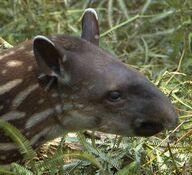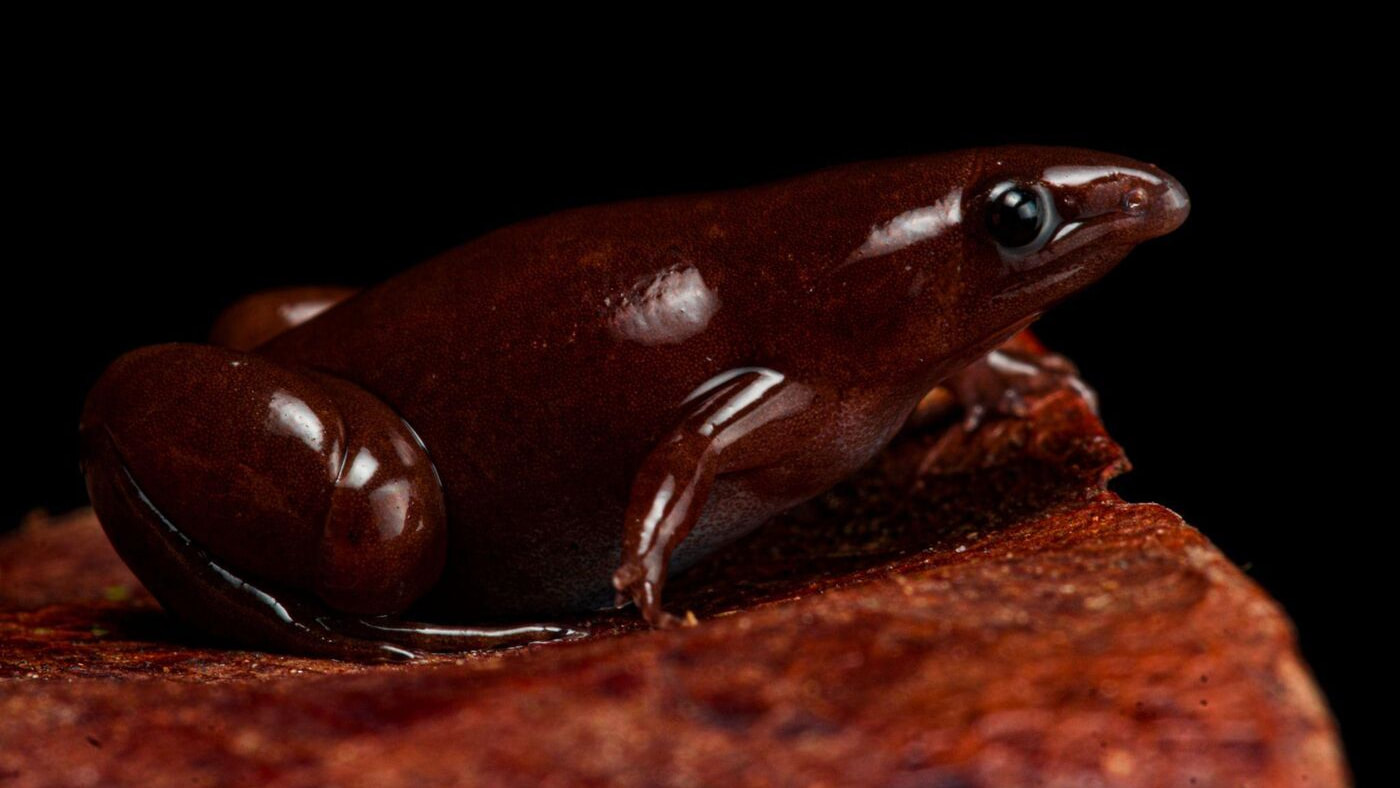
 Meet one of the Amazon's most recently discovered frog -- the tapir frog (photograph above by Germán Chávez)! So named for the shape of its snout, which is similar to the snout of a tapir (see inset photo left). The scientific names, Synapturanus danta, refers to how local people of the Putumayo river of Amazonian Peru call the Amazon tapir ("danta"). This new species of microhylid frogs live in the soils of stunted pole forests growing on peat, a type of ecosystem which is common in this region of northeastern Peruvian Amazonia. Synapturanus frogs are fossorial, and often overlooked during herpetological surveys and inventories, and thus their diversity is likely underestimated. Several putative new species have been suggested in different regions of the Amazon basin and the Guiana shield. It is likely that more species remain to be discovered, given the fossorial habits of these frogs reduce their detectability and their limited dispersal abilities may be associated with high endemism. Reference: Chávez, G., M.E. Thomson, D.A. Sánchez, J.C. Chávez-Arribasplata, A. Catenazzi. 2022. A needle in a haystack: Integrative taxonomy reveals the existence of a new small species of fossorial frog from Peru. Evolutionary Systematics 6: 9-20. https://doi.org/10.3897/evolsdoi.org/10.3897/evolsyst.6.80281
1 Comment
|
Archives
June 2024
CATENAZZI LABNews from the lab Categories |

 RSS Feed
RSS Feed